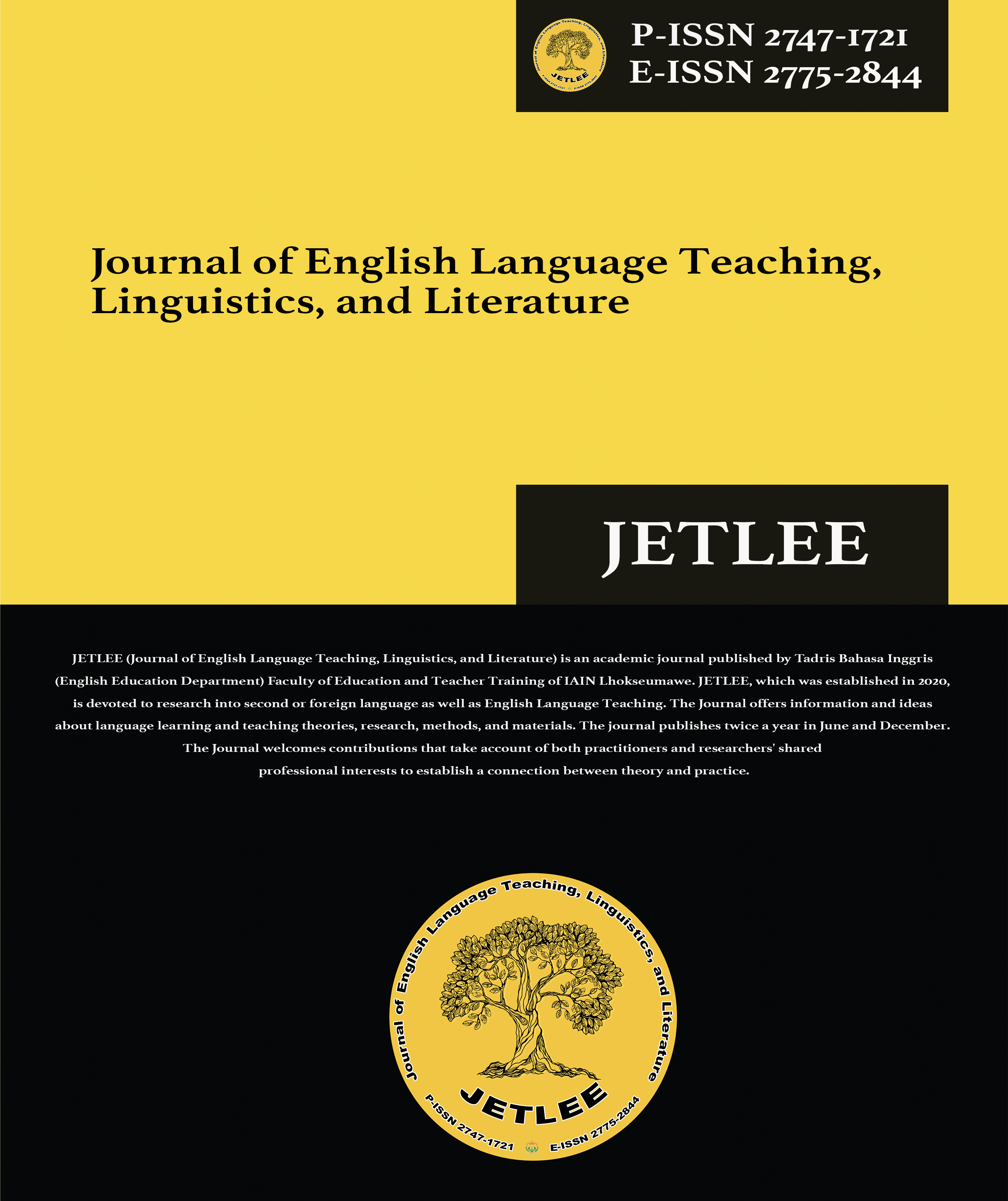Decoding the Denotative and Connotative Elements in Sony Pictures Animation’s Short Film “Hair Love” (2019)
Main Article Content
Aulia Nur Fitri Lestari
The current era has witnessed significant developments in the realms of digital and technology, which have impacted every aspect of our lives, including the art of filmmaking. Not only has technology empowered actors to portray characters, but it has also given rise to animated films to give a message. A prominent scholar, Roland Barthes, proposed that the concept of semiotics could be used as a tool to uncover hidden meanings in various forms of media. The objective of this paper is to examine the denotative elements in Sony Pictures Animation's Hair Love using Roland Barthes' semiotic theory. The purpose of this study is to discuss and explain the nonverbal signs or symbols that appear in the film. The denotative elements present in Hair Love are identified and analyzed using qualitative analysis in this study. The findings of this study reveal the presence of 23 denotative and connotative elements in the movie. Overall, this study contributes to the field of semiotics by analyzing the denotative elements in a contemporary animated film using Barthes' theory. This study's findings can provide useful insights into the use of nonverbal symbols in animated films and how they can be used to convey hidden meanings to the audience.
Keywords: Semiotic, Barthes, Connotation, Denotation
Amini, F., Riche, N. H., Lee, B., Leboe-McGowan, J., & Irani, P. (2018, May). Hooked on data videos: assessing the effect of animation and pictographs on viewer engagement. In Proceedings of the 2018 International Conference on Advanced Visual Interfaces (pp. 1-9).
Barthes, R. (1957). Mythologies. A. Lavers & C. Smith (Trans.). United States of America: Hill and Wang.
Brück, J. (2006). Fragmentation, Personhood and the Social Construction of Technology in Middle and Late Bronze Age Britain. Cambridge Archaeological Journal, 16(3), 297-315. DOI: https://doi.org/10.1017/S0959774306000187
Busch, M., Karras, O., Schneider, K., & Ahrens, M. (2020). Vision meets visualization: Are animated videos an alternative?. In Requirements Engineering: Foundation for Software Quality: 26th International Working Conference, REFSQ 2020, Pisa, Italy, March 24–27, 2020, Proceedings 26 (pp. 277-292). Springer International Publishing. DOI: 10.1007/978-3-030-44429-7_19
Candra, R. (2011). The Effectiveness Of Using Animation Movies as A Medium to Improve the Students’ Writing Skill of Narrative Text. Semarang State University.
Creswell, J. W. (2014). Research Design: Qualitative, quantitative, and mixed methods approaches. London: SAGE Publications Ltd.
Cunningham, S., & Craig, D. (2019). Creator Governance in Social Media Entertainment. Social Media+ Society, 5(4). DOI: https://doi.org/10.1177/2056305119883428
Erlidawati, E., & Rahmah, S. (2022). The Educational Values in Fairy Tale Cartoon Film. JETLEE: Journal of English Language Teaching, Linguistics, and Literature, 2(1). DOI: https://doi.org/10.47766/jetlee.v2i1.203
Gurvitch, R., & Lund, J. (2014). Animated video clips: Learning in the current generation. Journal of Physical Education, Recreation and Dance, 85(5), 8-17. DOI: https://doi.org/10.1080/07303084.2014.897566
Kadiman, D. (2019). Semiotic analysis of analysis of Jonas Blue's music video rise through Roland Barthes' theory. Tangerang Buddhi Dharma University.
Karakolidis, A., O’Leary, M., & Scully, D. (2021). Animated videos in assessment: comparing validity evidence from and test-takers’ reactions to an animated and a text-based situational judgment test. International Journal of Testing, 21(2), 57-79. DOI: https://doi.org/10.1080/15305058.2021.1916505
Kirkpatrick, B. (1993). Giant Paperback Dictionary. London: The Bath Press.
Pate, J. W., Heathcote, L. C., Simons, L. E., Leake, H., & Moseley, G. L. (2020). Creating online animated videos to reach and engage youth: Lessons learned from pain science education and a call to action. Paediatric and Neonatal Pain, 2(4), 131-138. DOI: https://doi.org/10.1002/pne2.12015
Paujan, A. (2018). A Semiotic Analysis Of The John Wick 1 Film Using Charles Sanders Pierce’s Semiotic Theory. Alauddin State Islamic University of Makassar.
Peirce, C. S. (1931). Collected Papers. Cambridge: Harvard University Press.
Prajnadi, N. (2018). Analysis of BTS's music video "Blood, Sweat, and Tears" through the semiotics of Charles Morris. Tangerang Universitas Buddhi Dharma.
Rutsyamsun, V., & Sakinah, R. M. N. (2023). A Semiotic Analysis of Social Criticism in Robert Zemeckis’s Forrest Gump Movie (1994). JETLEE: Journal of English Language Teaching, Linguistics, and Literature, 3(1), 22-30. DOI: https://doi.org/10.47766/jetlee.v3i1.1069
Thwaites, T., Davis, L., & Mules, W. (2018). Introducing Cultural And Media Studies: A Semiotic Approach. Bloomsbury Publishing.
Withalm, G. (2002). Media: Semiotics. In Encyclopedia of Language & Linguistics (2nd ed.). Manchester University Press. DOI: https://doi.org/10.1016/B0-08-044854-2/0142




